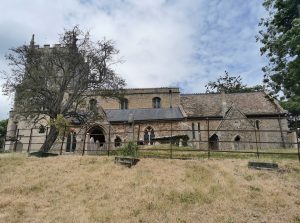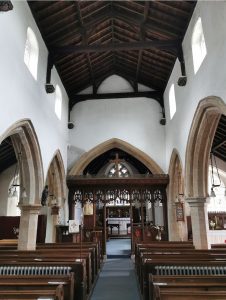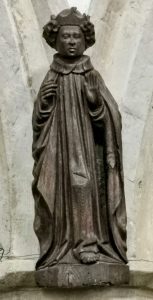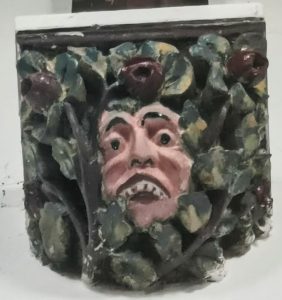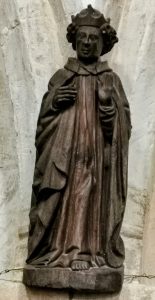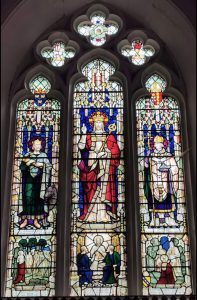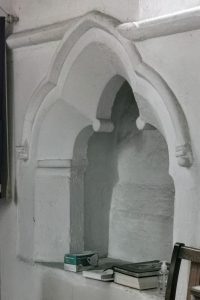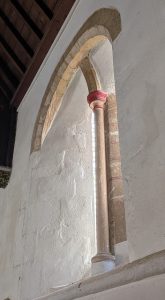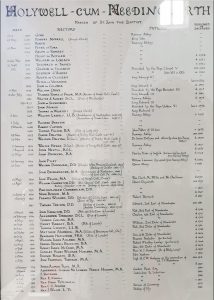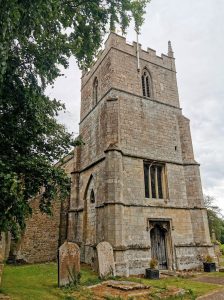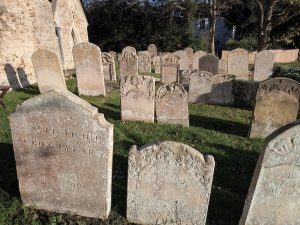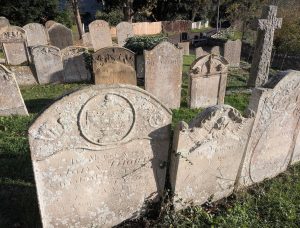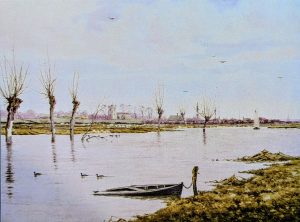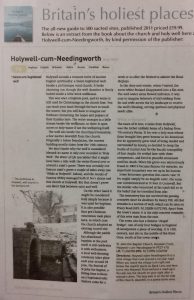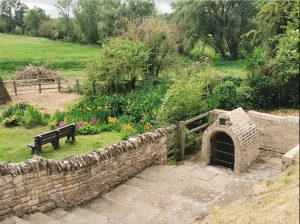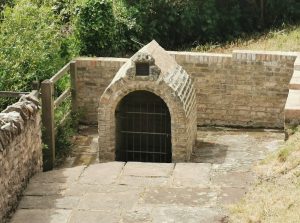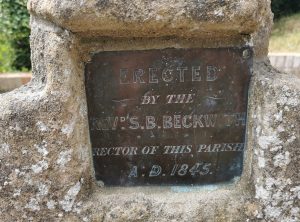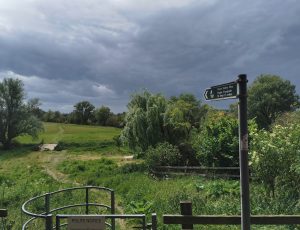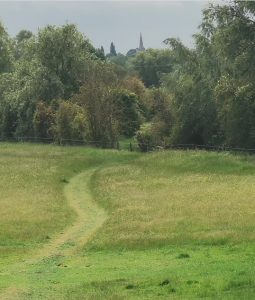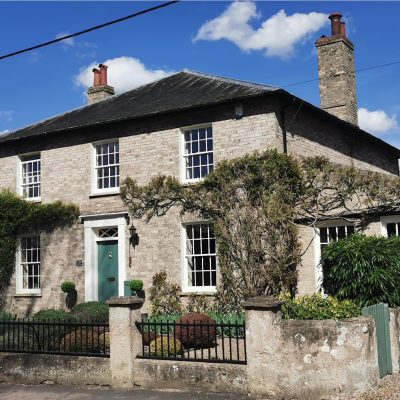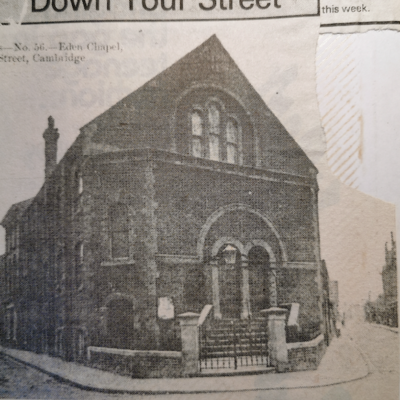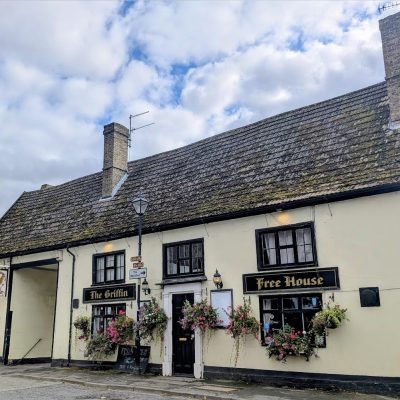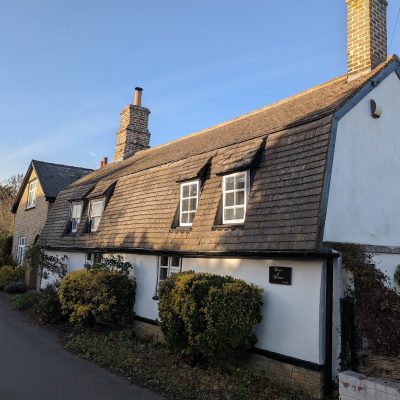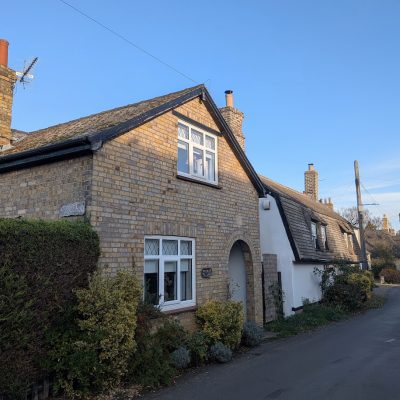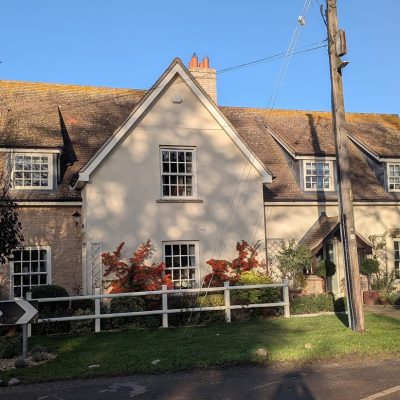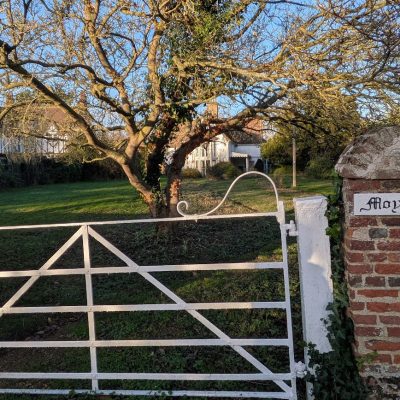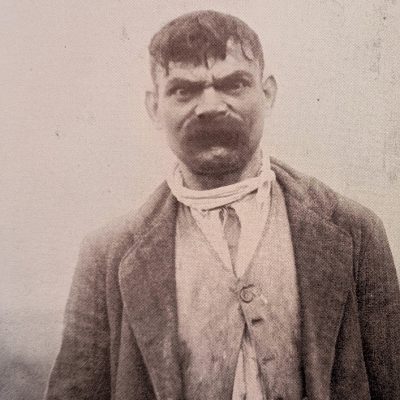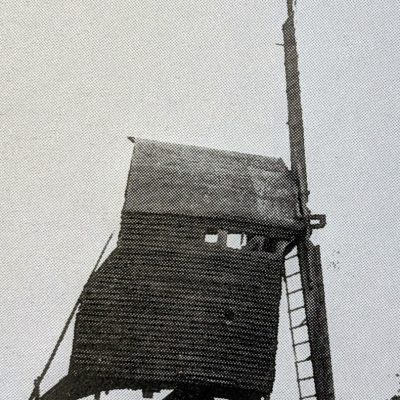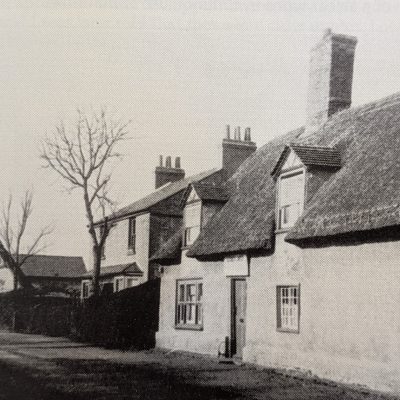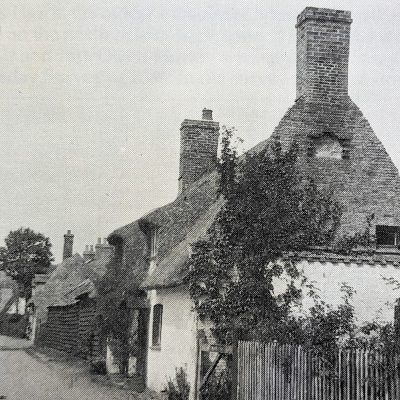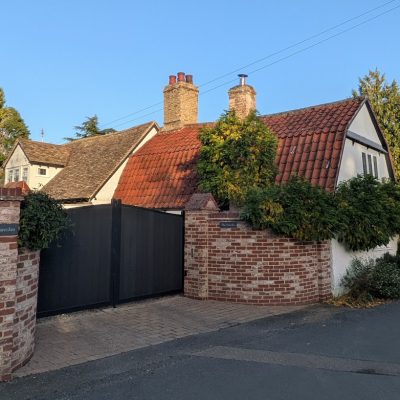Search by topic
- archaeology
- Building of Local Interest
- chapel
- charity
- church
- crime
- dressmaker
- fire
- Great Eastern Railway
- Listed building
- Mapping Relief
- medieval
- oral history
- poverty
- Public House
- Religious House
- Roman
- scholar
- school
- Then and Now
- tudor
- women
- work
- world war one
- world war two
Search by text
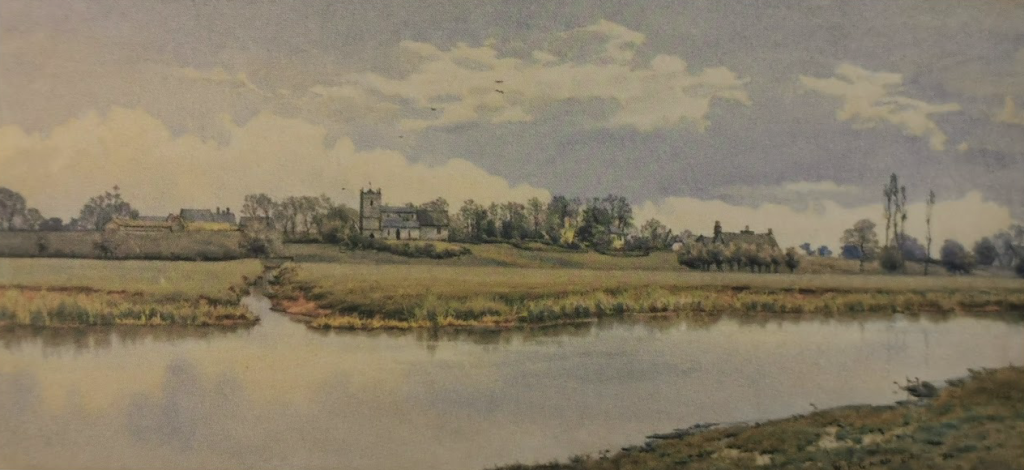 Holywell church, William Fraser Garden (1856-1921)
Holywell church, William Fraser Garden (1856-1921) St John the Baptist, Holywell
History of St John the Baptist
Listed Building
Parish Church. Nave, chancel and north aisle C13, south aisle circa 1300. West tower added in 1547 by the mason Thomas Roper. South porch dates from the 1862 restoration. Tower restored in 1915, vestry rebuilt in 1919
Ancient well, fed by a natural spring. Covered by a semi-circular brick shelter with an elliptical arched opening facing east, capped by a C13 or C14 stone corbel and stone plaque with the inscription ‘Rev S B Beckwith Rector of this Parish AD 1845’.
According to The Holywell Story by John Newell, 1991:
It is thought that the name arose in Roman times, from use of the water for sacred purposes – it really is a spring and not a ‘well’ at all. … According to the legend the well owes it’s reputed sanctity to the seventh century Persian Bishop Ivo who was buried at St Ives and whose remains were transferred to Ramsey Abbey about 1000 AD. His bones, and wells and springs connected with his name were credited with healing properties. As recently as 1933 a woman was seen sitting with her feet in the water to cure a foot complaint. People often came to bathe for such complaints as sore eyes. In 1934 a boy was reported to have been healed of a sore on his forehead after bathing it with water from the well.
There was a church well established at Holywell in 969 … the name of only one incumbent has survived, Gode, who flourished about 990.
In the Domesday Survey it is recorded that ‘In Haliewell the Abbot of Ramsey has 9 Hides (1080 acres) which paid Geld (Landtax) … here is a Church and a Priest and 3 acres of meadow. There is wood for pannage approximately one and quarter miles by one mile in area.’
The Holywell Story by Joe Newell has a chapter devoted to the life of Victor Carter. He was interviewed and recalled many events in his life including the burning of the town pump on St Ives Market Hill during the Relief of Mafeking celebrations.
Vic was born in 1887; his father was coachman and groom at the rectory for Rev Hoskyns. His Uncle Bill operated the ferry, charging 1d per passenger. At 8 Victor became a member of the church choir and took music lesson s in St Ives with Mr Tyrell in East Street. Later he studied organ with Mr Halton of Earith, organist at St Ives. When he was nineteen he was appointed organist at Holywell church. For the most of the rest of his life he played organs in the area at Holywell, Fenstanton, Bluntisham, Wilburton and Somersham.
In 1914 he was working at Fullers coach-building works in St Ives. He volunteered in 1915 joining the Hunts Cyclists; after training he became a sniper. In 1917 be became a runner; at Passchendaele he was wounded in the thigh.
He official retirement as organist took place in Holywell in 1970.
1891 Front Street
George Carter, 34, groom, b Holywell
Elizabeth, 34, b Houghton
George, 8, b Holywell
Beatrice, 9, b Holywell
Victor, 3, b Holywell
Harold, 1, b Holywell
1939 High Street
Victor Carter, b 1887, egg collector and poultry food distributor
Susan A, b 1892,
Joan Harridge, b 1928, at school [?evacuee]
?
Contribute
Do you have any information about the people or places in this article? If so, then please let us know using the Contact page or by emailing capturingcambridge@
License
This work is licensed under CC BY-NC-SA 4.0





